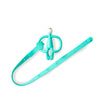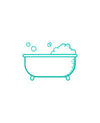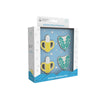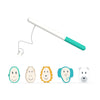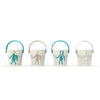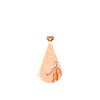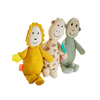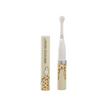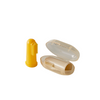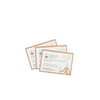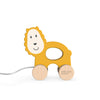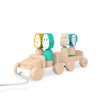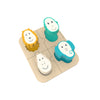How Colours Affect Your Baby
Our world is filled with exciting colours, so much so that we sometimes get so used to living in a colourful world that we fail to pay attention to it! But colours do so much more than just please the eye - they have the potential to signal important information, change moods, and even help improve brain function and cognitive skills! As we grow older we become used to colours, and their effects blend into the background, but for babies and infants just discovering the world, the sheer number of shades is an exciting adventure which is only just beginning! Read on to find out how to use colours with your young children and how promoting colour play can benefit your babies!
Mix it Up!
Studying the colour wheel is all well and good, but one of the best ways to learn about colours is experimenting with making them yourself! The simplest way to achieve this is to put various primary coloured poster paints in cups and letting your child go wild mixing and painting - make sure you’re present throughout so that you can narrate what they’re doing, help them to notice that blue and yellow magically create green, and so on. Remember to get non-toxic paints and make sure to cover your workspace in newspaper or plastic sheeting to avoid staining!
Mix it Up - Bathtime Edition!
Another great colour mixing activity is adding food colouring to bath water! Pour small amounts of colour into different cups and let your child experiment with pouring them into their bathwater one at a time, and help them to take note of the changes. This activity has the added bonus of helping to develop your child’s motor skills, as pouring requires some dexterity, as well as being very easy to clean up - just empty out the bath and rinse off your child and the tub when you’re finished!
Point out Colours in Media
Follow your child’s lead and use the media they already enjoy to point out colours and check their understanding. Children’s television and books are highly saturated with colours and make for great examples! You can also encourage this by choosing books that focus on colour, such as our Matchstick Monkey book, which helps young children interactively learn about colours!
Get Colourful with Space
Much research has been done into how colours in the atmosphere affect our moods, and children experience this just as much as adults! Warm-toned colours such as yellow, pink and orange tend to brighten up a space and make it warm and inviting, and can also be uplifting! Dark, cool-toned colours such as blues and purples are more often associated with calming feelings. Think about what colours you use in your nursery decor or child’s clothing as these can have subtle but significant effects on their moods!
Whatever way you choose to introduce colour into your child’s life, have fun with it! Remember, colours aren’t only for children!







